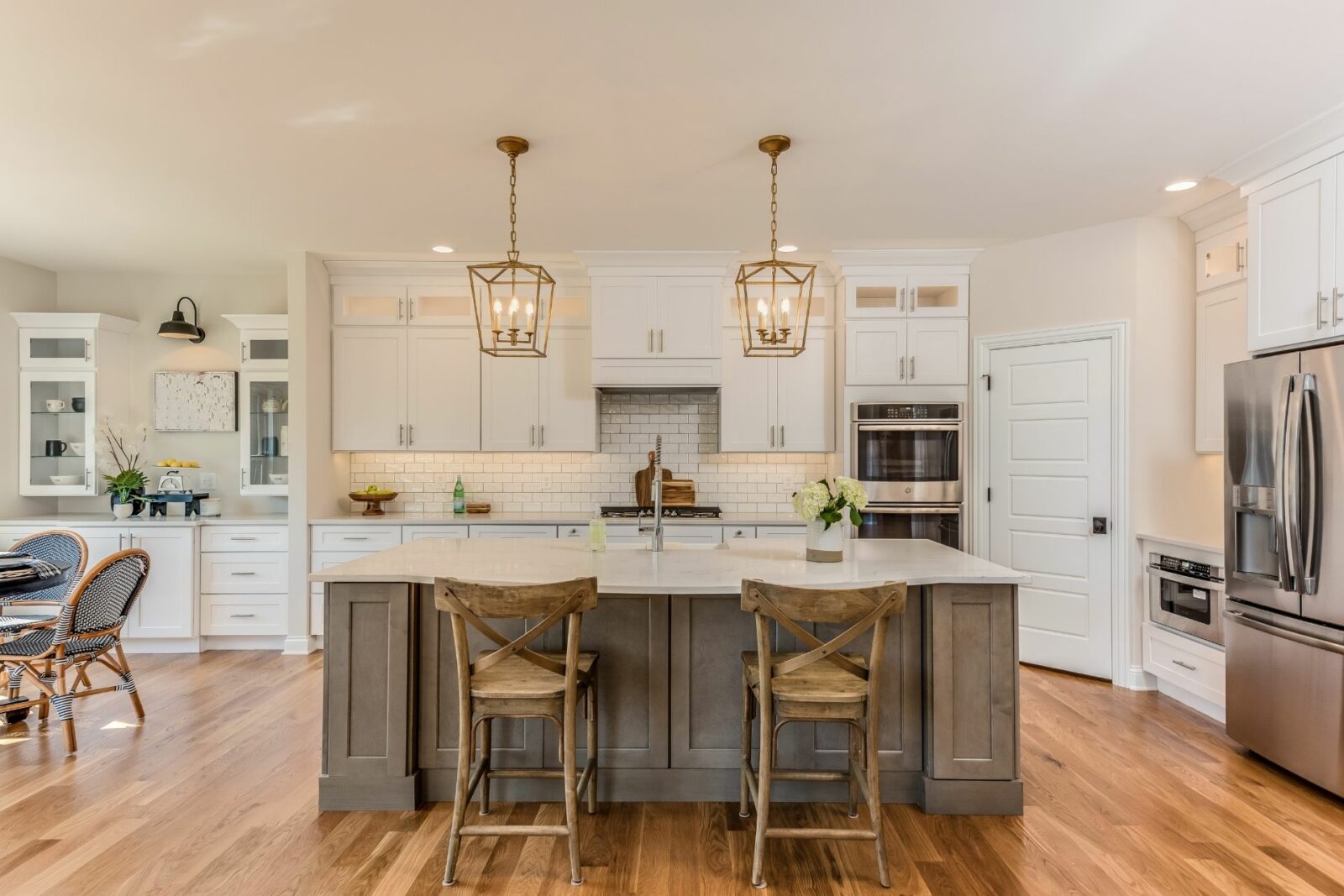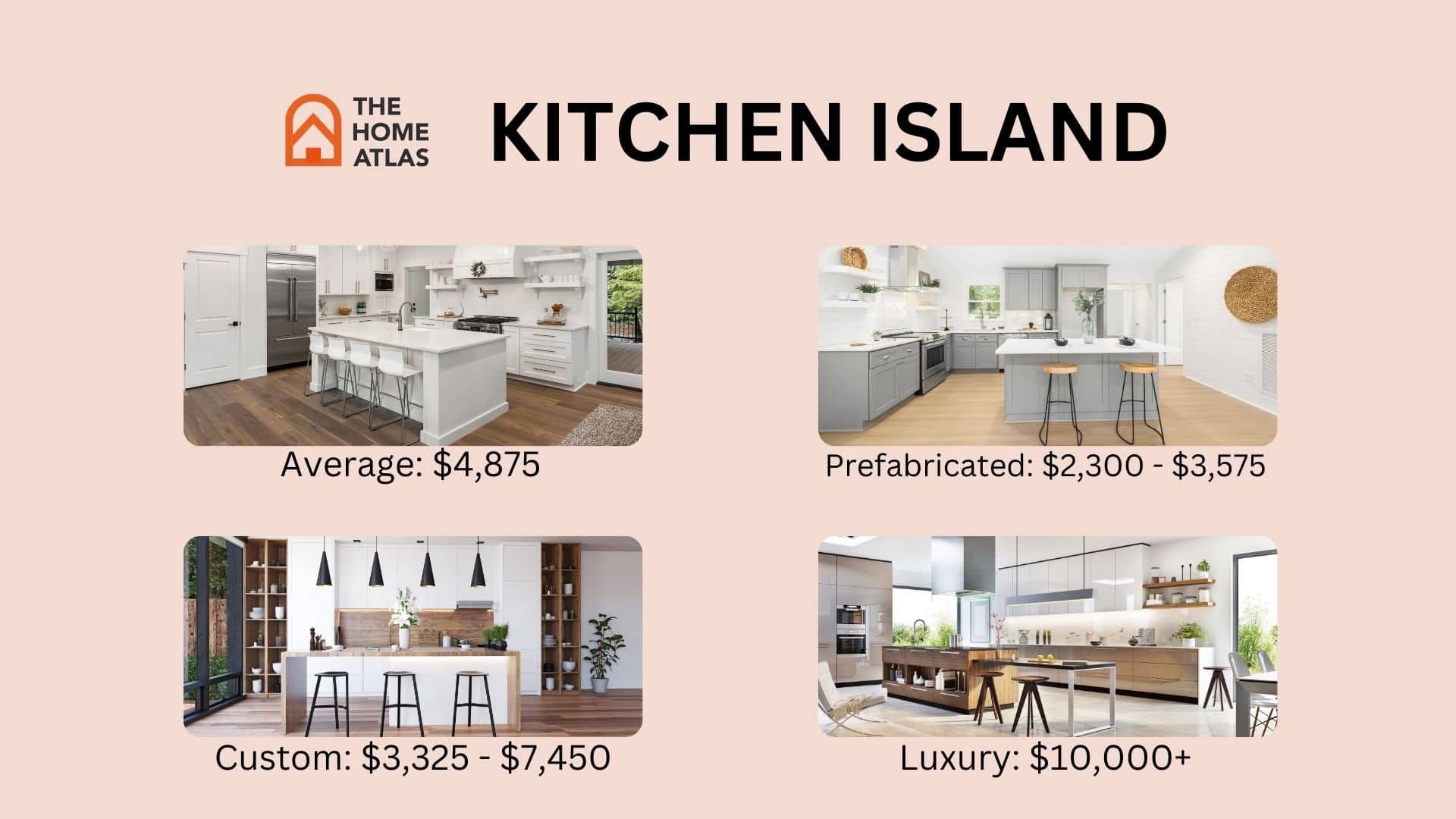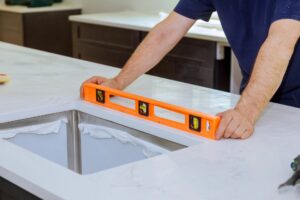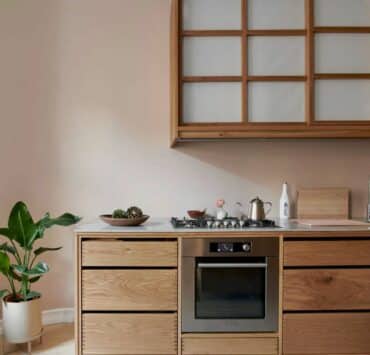The average kitchen island cost in 2024 is around $4,875. However, this price can range widely depending on several factors.
For a prefabricated kitchen island, prices typically range from $2,300 to $3,575. These islands come in various styles and sizes, making them a versatile option for many homeowners.
On the higher end, custom kitchen islands can cost between $3,325 and $7,450, with ultra-luxury options exceeding $10,000.
Factors Influencing Kitchen Island Cost
Type of Island:
-
- Prefab Kitchen Islands: These islands are mass-produced and generally more affordable, with costs ranging from $2,300 to $3,575. At the lower end, rolling cart islands can be as cheap as $100, while high-end prefab models with features like granite countertops and real wood cabinets can exceed $5,000.
- Custom Kitchen Islands: Custom options, which offer more personalization, typically range from $3,325 to $7,450. The price can easily surpass $10,000 for larger islands with luxury materials like marble countertops and custom cabinetry.
Installation Costs:
-
- Basic Installation: A straightforward installation might only require a kitchen remodeling contractor for a day, costing between $500 to $1,000.
- Complex Installation: More complex setups, including plumbing, electrical work, and ventilation, can add hundreds or even thousands of dollars to the total cost, depending on the requirements.
Size:
Larger islands require more materials and labor, increasing the overall cost.
Materials:
High-end materials like granite, marble, and custom wood cabinetry are more expensive than laminate or prefab options.
Features:
Additional features such as sinks, cooktops, and built-in appliances add to the cost.
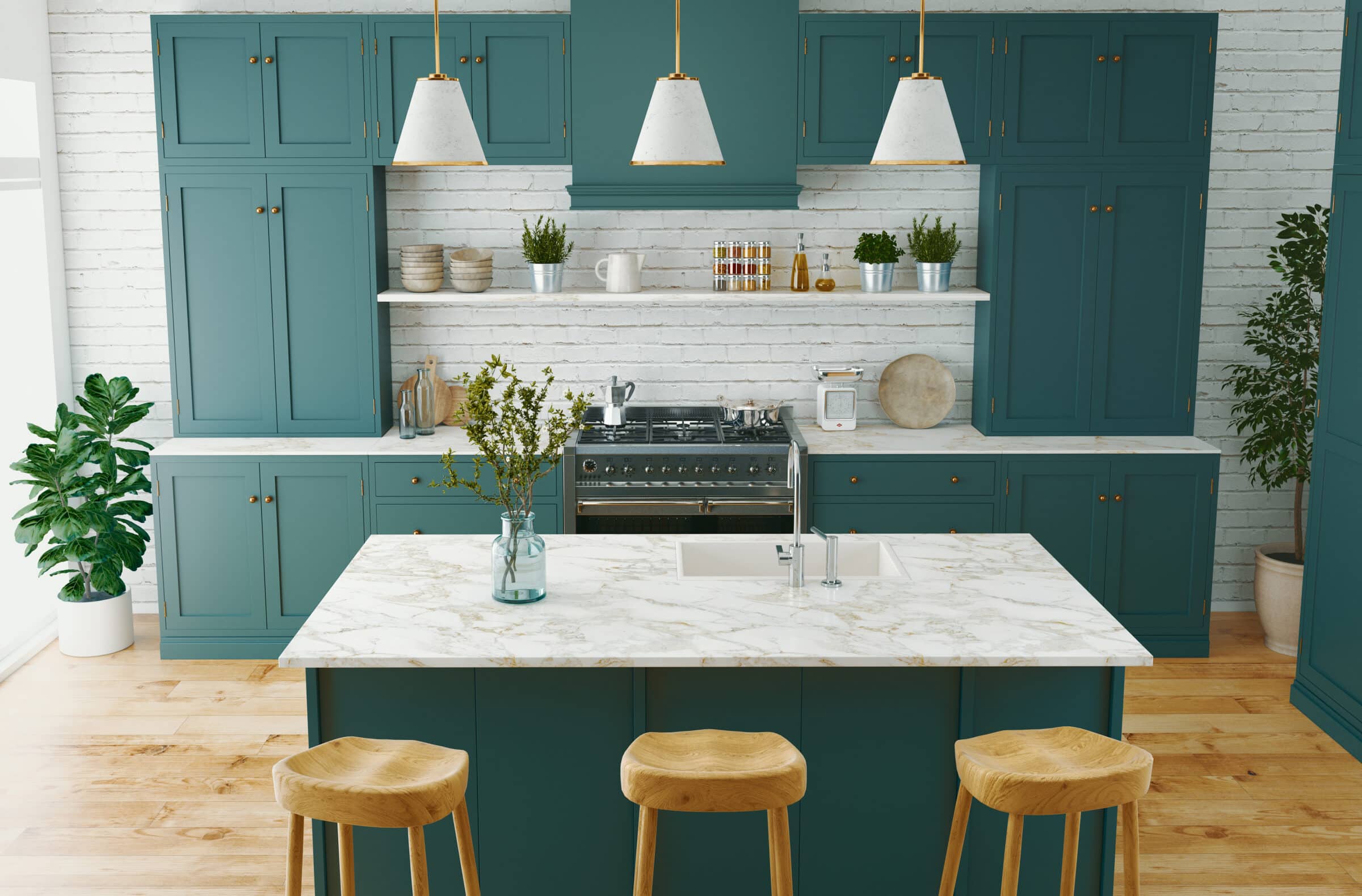
Kitchen Island Cost by Style and Features
- Rolling Cart Islands: These cost between $100 to $2,500, offering flexibility and mobility.
- Rectangular Islands: Prices range from $500 to $1,500, suitable for open floor plans.
- L-Shaped Islands: Cost between $1,000 to $7,000, often including features like sinks and cooktops.
- U-Shaped Islands: These can range from $2,000 to $9,000, typically custom-built for larger kitchens.
- Galley Islands: Prices range from $500 to $5,000, ideal for narrow kitchen spaces.

Common Questions
How much does it cost to install a kitchen island?
The installation cost for a kitchen island depends on the complexity of the project:
- Basic Installation: For a straightforward installation by a kitchen remodeling contractor, costs typically range from $500 to $1,000.
- Complex Installation: If the project involves plumbing, electrical work, or custom cabinetry, the installation cost can add several hundred to a few thousand dollars to the overall price.
Are prefab kitchen islands cheaper than custom-built ones?
Yes, prefab kitchen islands are generally cheaper than custom-built options. Prefabricated islands, which are mass-produced, typically cost between $2,300 and $3,575. They offer a range of styles and sizes to fit various budgets. Custom-built islands, on the other hand, are designed to meet specific requirements and preferences, with costs ranging from $3,325 to $7,450, and potentially exceeding $10,000 for luxury designs.
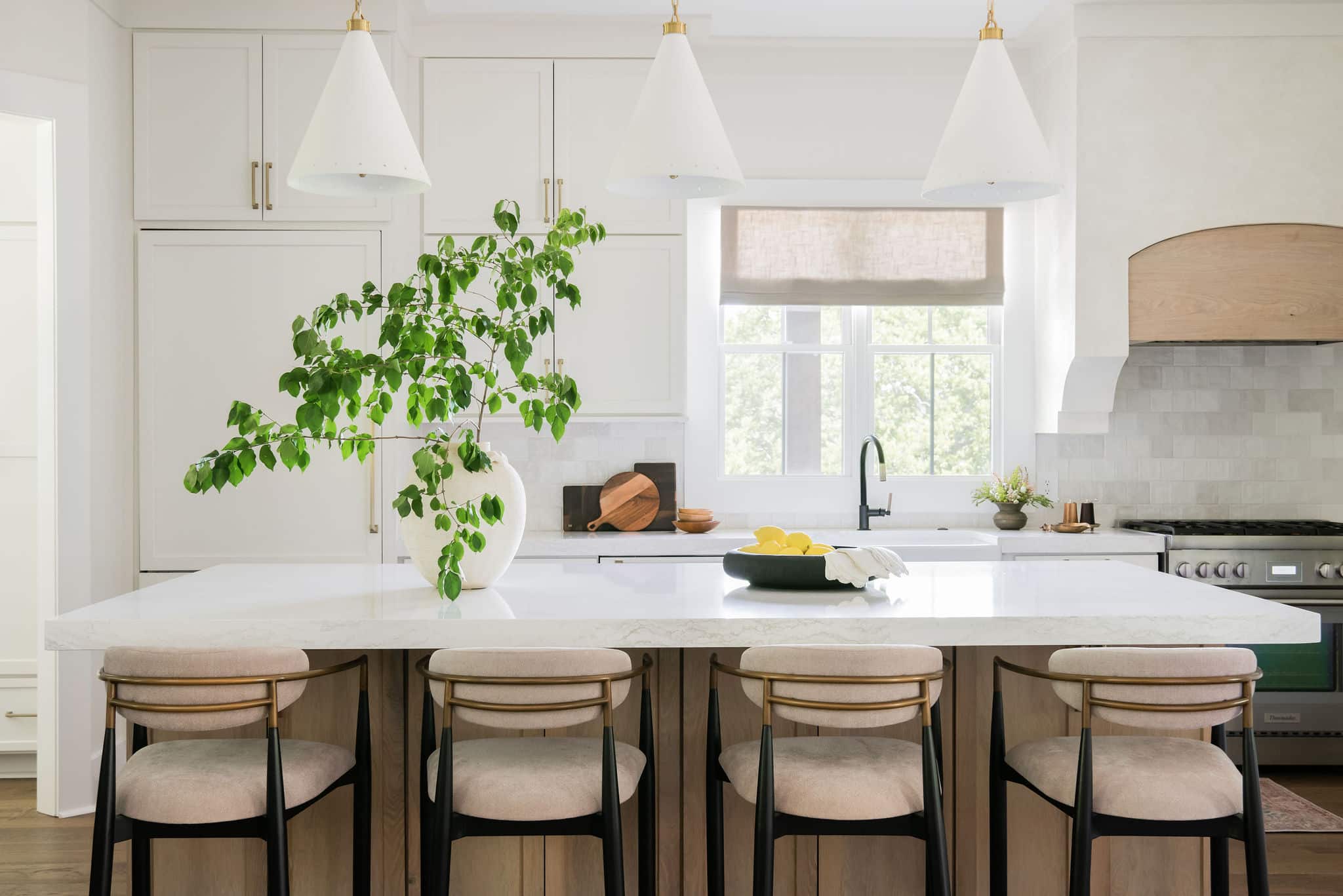
Can I save money by installing a kitchen island myself?
Installing a kitchen island yourself can save on labor costs, but it’s important to consider the complexity of the project. For a simple rolling cart island or a basic prefab model, DIY installation might be feasible. However, for islands requiring plumbing, electrical work, or custom cabinetry, professional installation is recommended to ensure safety and proper functionality. Mistakes in DIY installations can lead to additional costs for repairs or adjustments.
What is the cheapest option for a kitchen island?
The cheapest option for a kitchen island is a rolling cart island, which can be purchased for as little as $100. These portable islands are versatile and can be moved as needed. They are ideal for small spaces or temporary solutions. For a more permanent yet affordable option, a basic prefab kitchen island can cost between $2,300 and $3,575, offering a balance of cost and functionality without the higher expense of custom designs.
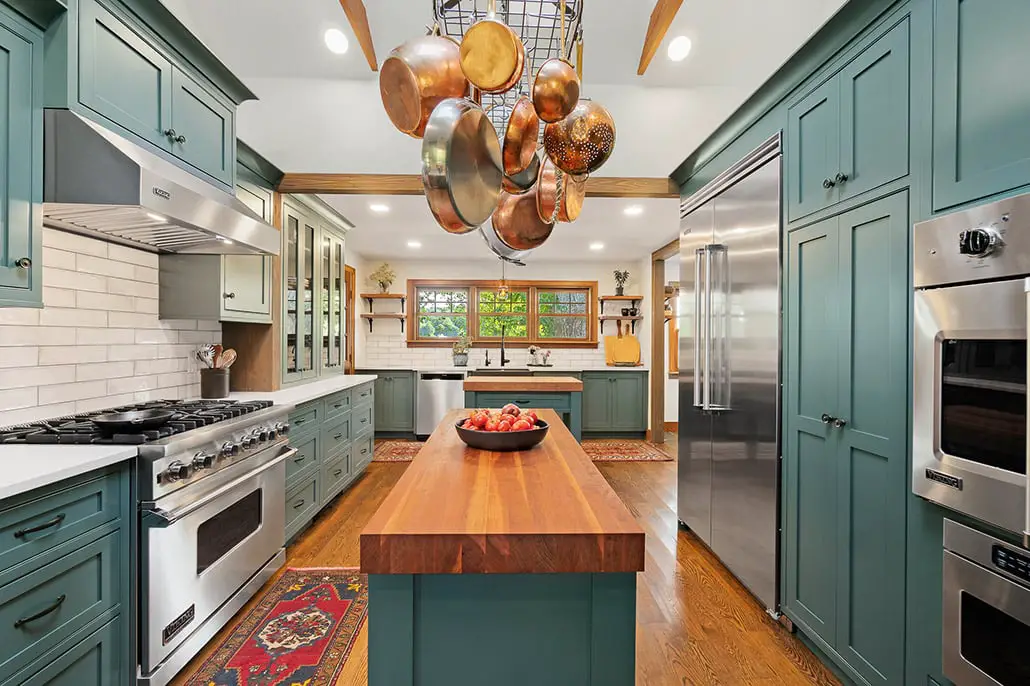
Making the Right Choice
When considering the kitchen island cost in 2024, it’s important to weigh the benefits of prefab versus custom options, as well as the potential additional expenses for installation and features. By understanding these variables, you can better plan your budget and create a kitchen island that meets your needs and enhances your home.
